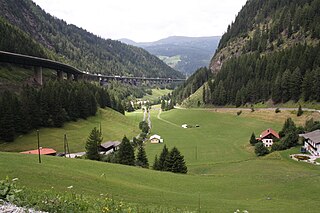
The Brenner Pass is a mountain pass over the Alps which forms the border between Italy and Austria. It is one of the principal passes of the Eastern Alpine range and has the lowest altitude among Alpine passes of the area.
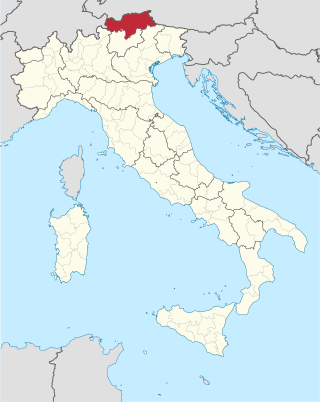
South Tyrol is an autonomous province in northern Italy. An English translation of the official German and Italian names could be the Autonomous Province of Bolzano – South Tyrol, reflecting the multilingualism and different naming conventions in the area. Together with Trentino, South Tyrol forms the autonomous region of Trentino-Alto Adige/Südtirol. The province is the northernmost of Italy, the second largest with an area of 7,400 square kilometres (2,857 sq mi), and has a total population of about 534,000 inhabitants as of 2021. Its capital and largest city is Bolzano.

Trentino-Alto Adige/Südtirol is an autonomous region of Italy, located in the northern part of the country. The region has a population of 1.1 million, of whom 62% speak Italian as their mother tongue, 30% speak South Tyrolean German and several foreign languages are spoken by immigrant communities. Since the 1970s, most legislative and administrative powers have been transferred to the two self-governing provinces that make up the region: the province of Trento, commonly known as Trentino, and the province of Bolzano, commonly known as South Tyrol. In South Tyrol, German remains the sizeable majority language.
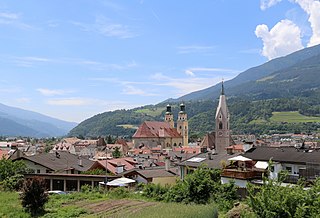
Brixen is a town and commune in South Tyrol, northern Italy, located about 40 kilometres (25 mi) north of Bolzano.

The Citizens' Union for South Tyrol, formerly Union for South Tyrol, was a national-conservative and, at times, right-wing populist political party active in South Tyrol, Italy.
The Prontuario dei nomi locali dell'Alto Adige is a list of Italianized toponyms aimed at replacing the place names used by the German language community in South Tyrol which was published in 1916 by the Royal Italian Geographic Society. The list was called the Prontuario in short and later formed an important part of the Italianization campaign initiated by the fascist regime, as it became the basis for the official place names in the predominantly German-speaking Italian-annexed southern part of the County of Tyrol.

Brenner is a comune and a village in South Tyrol in northern Italy, located about 60 km (37 mi) north of Bolzano on the border with Tyrol, Austria.
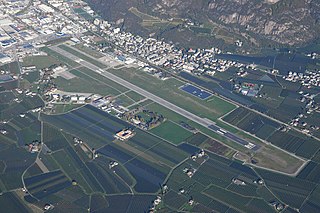
Bolzano Airport is a regional airport near Bolzano in the province of South Tyrol in northern Italy.

South Tyrolean Freedom is a regionalist, separatist and national-conservative political party in South Tyrol, Italy. The party, which is part of the South Tyrolean independence movement, seeks to represent the German-speaking population and proposes the secession of South Tyrol from Italy and its reunification with the State of Tyrol within Austria.
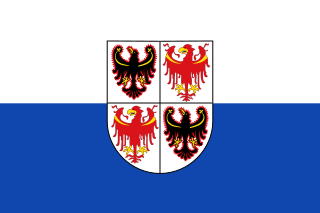
The Politics of Trentino-Alto Adige/Südtirol takes place in a framework of a parliamentary representative democracy, whereby the President of Regional Government is the head of government, and of a pluriform multi-party system. Executive power is exercised by the Regional Government and Legislative power is vested in both the government and the Regional Council. However, since a constitutional reform in 1972, almost all the executive and legislative powers are devolved to the two provinces of which the region is composed: Trentino and the South Tyrol.

The 11th Infantry Division "Brennero" was a infantry division of the Royal Italian Army during World War II. The Brennero was classified as a mountain infantry division, which meant that the division's artillery was moved by pack mules instead of the horse-drawn carriages of line infantry divisions. Italy's real mountain warfare divisions were the six alpine divisions manned by Alpini mountain troops. The Brennero was named for the Brenner Pass between Italy and Austria. The division was based in the western half of South Tyrol with the division's headquarter in Bolzano.

The Brenner Railway is a major line connecting the Austrian and Italian railways from Innsbruck to Verona, climbing up the Wipptal, passing over the Brenner Pass, descending down the Eisacktal to Bolzano/Bozen, then further down the Adige Valley to Rovereto/Rofreit, and along the section of the Adige Valley, called in Italian the "Vallagarina", to Verona. This railway line is part of the Line 1 of Trans-European Transport Networks (TEN-T). It is considered a "fundamental" line by the state railways Ferrovie dello Stato (FS).

Bolzano/Bozen railway station is the main station of Bolzano, capital of the autonomous province of South Tyrol, in northeastern Italy.

Rovereto railway station serves the Comune of Rovereto in the autonomous province of Trentino, northeastern Italy.

The Autostrada A22 or Autobrennero or Autostrada del Brennero is one of the most important autostrada in Italy, as it connects Po Valley, the city of Modena and the Autostrada A1 to Austria through the Brenner Pass, located in the municipality of Brenner. The Autostrada A22 is 315 kilometres (196 mi) long. It is a part of the E45 European route. The operator of the road is Autostrada del Brennero S.p.A.. The Autostrada A22 is located in the regions of Emilia-Romagna, Lombardy, Veneto and Trentino-Alto Adige/Südtirol.

Polizeiregiment "Südtirol", later Bozen, and finally SS-Polizeiregiment "Bozen", was a military unit of the German Ordnungspolizei recruited in the predominantly German and Ladino-speaking Alto Adige region in north-east Italy in late 1943, during the de facto German annexation of the region. The ranks were South Tyrolean draftees while officers and NCOs were Germans.
The following is a timeline of the history of the city of Bolzano/Bozen in the Trentino-South Tyrol region of Italy.

Terrorism in Italy is related to political and subversive terrorism activities, carried out by various groups and organizations with different and sometimes conflicting methods, motivations and interests. This article is primarily about late 20th-century and early 21st-century terrorism.
Armando Ronca was an Italian architect who has executed numerous buildings and interior designs, mainly in South Tyrol, Trentino and Milan.
The Cima Vallona ambush was a double improvised explosive device attack on Italian security forces at Cima Vallona, Provincia di Belluno. The ambush was carried out on 26 June 1967 by members of the South Tyrolean Liberation Committee, a paramilitary organization seeking the independence of German-speaking South Tyrol from Italy. The first explosion, involving the use of a landmine, struck a patrol of Alpini from the Italian Army, called in after the bombing of an electricity pylon. A second patrol, this time composed by Carabinieri, bore the full blast of a booby-trap while searching the area of the previous attack. One Alpini and three Carabinieri were killed, while a fourth Carabiniere survived with serious injuries.
















